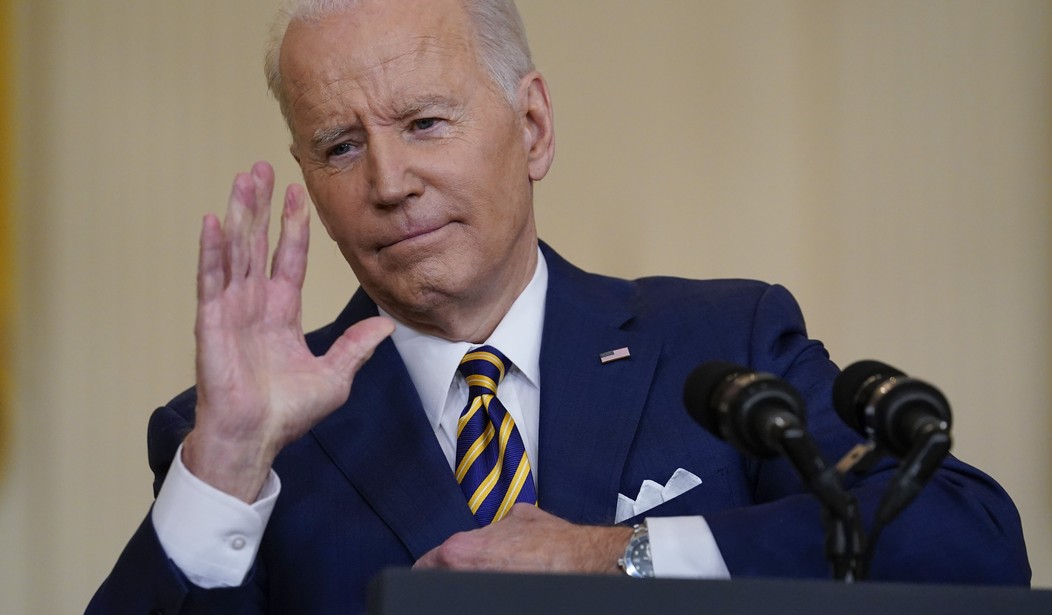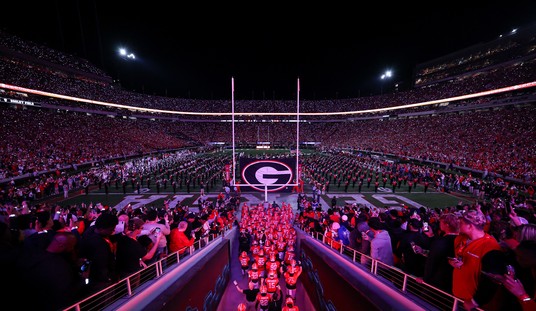Here at PJ Media, we’ve written tons about Joe Biden’s approval ratings and their downward trajectory over the past few months. They’re not pretty by any stretch of the imagination. As I write this, the president’s job approval rating is an average of 40.6% with a disapproval average of 55%, according to RealClearPolitics. That’s a spread of -14.4 points.
Generic Congressional polling averages don’t favor Biden’s party either, with RealClearPolitics showing the GOP with a 4.1 point advantage.
If circumstances don’t change drastically between now and November, the midterm elections could be an unmitigated disaster for the Democrats. Now, a million news cycles can break and fade away between now and then, but there’s a historical phenomenon that should have the Democrats scared to death.
Nathan Gonzales at Roll Call did a deep dive into presidential polling during midterm election years, and he uncovered a stunning fact: no president has seen his approval ratings rise significantly from January of a midterm election year through the election.
Looking back more than 70 years, there hasn’t been a single president who substantially improved his job approval rating from late January/early February of a midterm election year to late October/early November, according to Gallup’s rich polling archive.
More specifically, in the last 18 midterm elections going back to Harry Truman in 1950, the average president’s job approval rating dropped 8 points between this time of year and Election Day.
Gonzales pointed out some specific examples of recent Democrat presidents who faced midterm bloodbaths, despite higher approval ratings than Biden has now:
President Barack Obama had a 45 percent job approval rating in 2010, when Republicans gained 63 seats. President Bill Clinton had a 46 percent job approval rating in 1994 when the GOP gained 53 seats.
The only president whose approval ratings didn’t drop over the course of an election year was Donald Trump, whose numbers stayed flat (at about the level Biden is experiencing today) in 2018. The Democrats still gained 41 House seats that November.
Even Gerald Ford, who wasn’t even president in Jan. 1974, saw his approval ratings nosedive 20 points between taking the oath of office in Aug. 1974 and Election Day.
Recommended: Joe Biden Accidentally Framed the Democrats’ Biggest Challenge in 2022
But can Biden and the Democrats turn things around? Anything is possible, but it’s tough to imagine a scenario short of a miracle that could bring voters back around to Biden’s side. At this point in time, the Democrats are at a distinct disadvantage.
A recent Monmouth poll shows that independent voters favor Republicans to Democrats by a 10-point margin.
“Republicans have a default advantage heading into the midterms. Simply put, they are not currently in power,” says Patrick Murray of the Monmouth Polling Institute.
The GOP basically just needs to stay out of its own way to avoid losing momentum. The Democrat clown show is enough fuel for the fire of a red wave if things keep going as they are right now.
Public squabbling among Senate Democrats, continued COVID fear-porn, tone-deafness on inflation, and political theater on “voting rights” aren’t doing anything to help the Democrats’ chances this November. And they don’t show any propensity to learn from their mistakes.
So rest assured that history is on the Republicans’ side — as long as the GOP doesn’t snatch defeat from the jaws of victory.










Join the conversation as a VIP Member